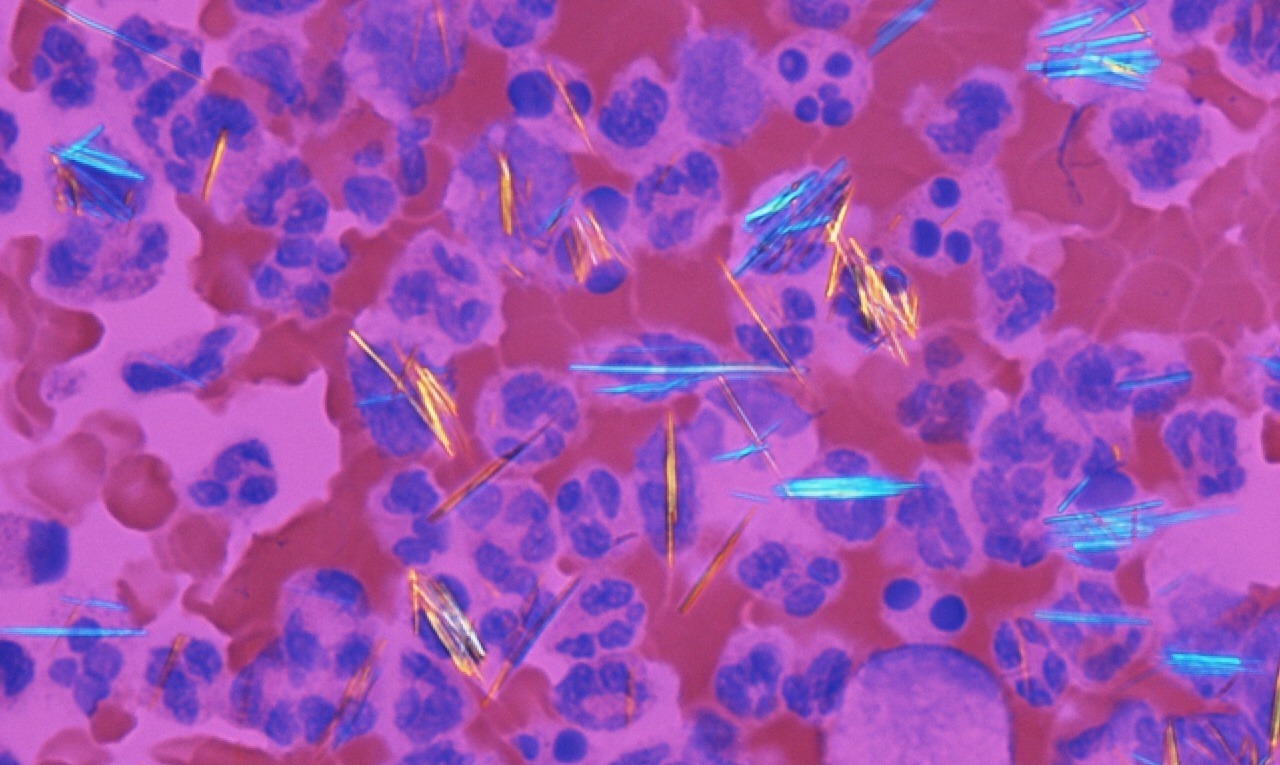
Background
Gout, a prevalent and often debilitating disease, is characterized by the painful deposition of uric acid crystals in synovial fluid. The gold standard of gout diagnosis is detection of crystals in synovial fluid through polarized light microscopy; however, this procedure is time-consuming, costly, and requires trained technicians. Investigators at Stony Brook University have developed a method and device to detect gout bedside, which will (a) considerably reduce diagnostic costs; (b) reduce the need for trained personnel; (c) hasten the treatment of gout by decreasing the diagnostic time; and (d) more rapidly rule out gout in potential cases of septic arthritis, overall providing a significantly more efficient point-of-care detection of gout.
Technology
Researchers at Stony Brook University have developed a point of-care method and device to detect uric acid based on the chemical property of uric acid to reduce ionic silver to metallic silver which can also differentiate between gout and pseudogout. A smartphone or a tablet with a portable microscope can be attached to the detection device to take the images of the crystals and save them in electronic medical records. A low cost device was also developed that can utilize a simple magnifying lens to visualize the stained crystals.
Advantages
- A bedside device to detect gout - Differentiate pseudogout from gout - Record results directly into electronic medical records - Low cost format to provide timely care where no advanced diagnostic facility is available
Application
This device will be of immense value to physician-based practices, health care institutes, and diagnostic laboratories. The low-cost version of this device can be used in any field settings and will be of immense value in poor and developing countries.
Inventors
Srinivas Pentyala, Professor and Director of Translational Research, Anesthesiology
Lawrence Hurst, Professor and Chair, Orthopaedics
Licensing Status
Available for Licensing
Licensing Contact
Valery Matthys, Licensing Associate, Intellectual Property Partners, valery.matthys@stonybrook.edu,
Patent Status
Patent application submitted
A PCT application (PCT/US2018/032220) covers the method and device of use.
Tech Id
050-8921
